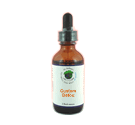 Arthropod/Vector
Bacteria
Chemicals
Fungus /Mold
/ Yeast Metals Parasites Virus Other Arthropod/Vector
Bacteria
Chemicals
Fungus /Mold
/ Yeast Metals Parasites Virus Other
|
Adenovirus
It has been labeled the "killer cold virus" because one of the strains (ad14) has sent multiple people to the hospital with pneumonia for several consecutive years. Adenoviruses are transmitted by direct contact, fecal-oral transmission, and occasionally waterborne transmission. Some types of adenoviruses are capable of establishing persistent asymptomatic infections in the tonsils, adenoids, and intestines. Shedding of the virus can occur for months or years after the initial infection. Some types of adenoviruses are endemic (constantly present) in certain parts of the world and infection is usually acquired during childhood. Other types of adenoviruses cause sporadic infection and occasional outbreaks. For example, epidemic keratoconjunctivitis (eye infection) is associated with certain adenoviruses. Epidemics of fever with conjunctivitis are associated with waterborne transmission of some adenovirus types, seemingly common around contaminated swimming pools and small lakes. The clinical spectrum of disease associated with certain adenoviruses depends on the site of infection. For example, infection with adenovirus 7 acquired by inhalation is associated with severe lower respiratory tract disease, while oral transmission of the virus typically causes no disease or mild. Outbreaks of adenovirus-associated respiratory disease have been more common in the late winter, spring, and early summer. However, adenovirus infections can occur throughout the year. |
|


